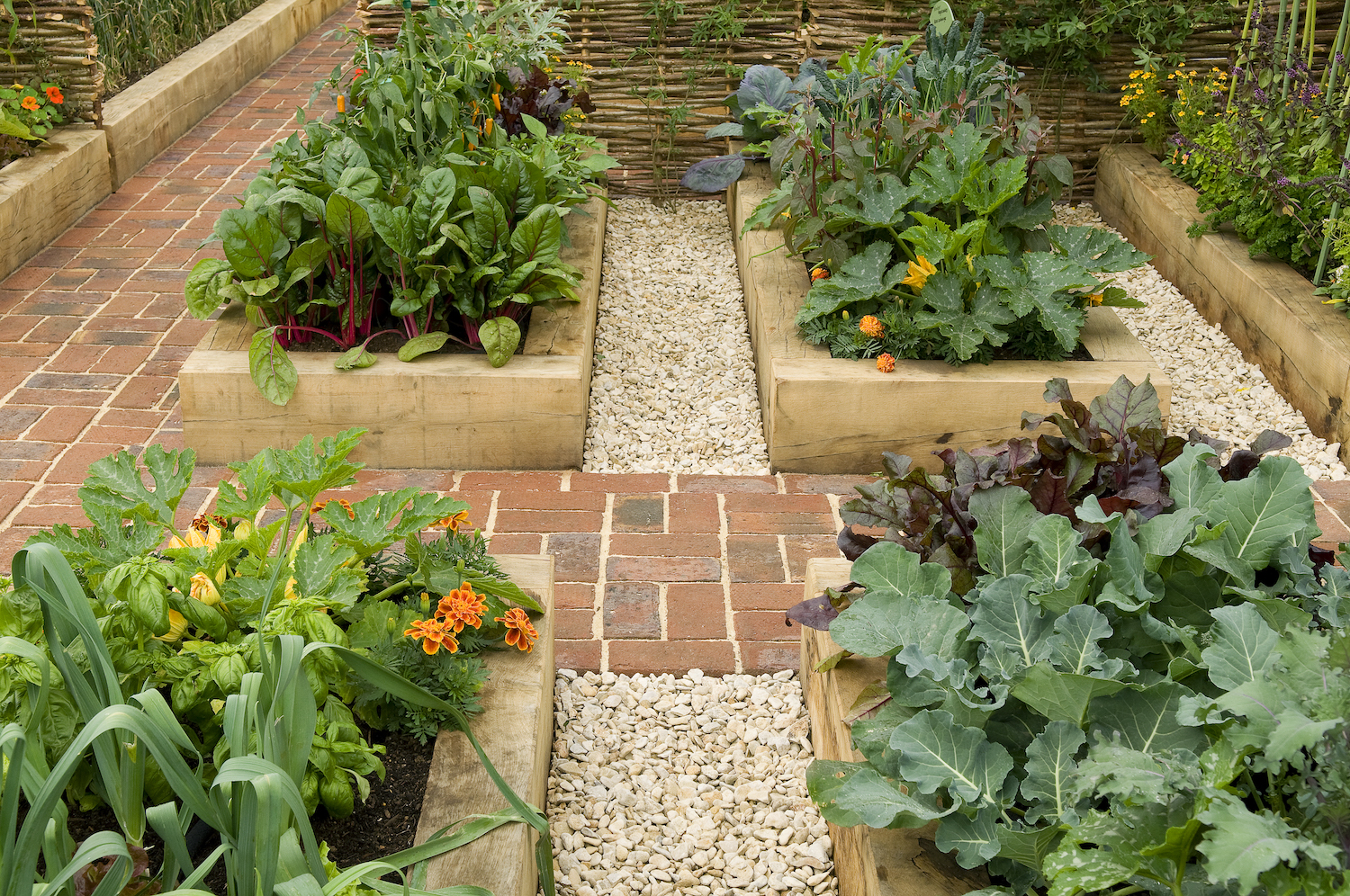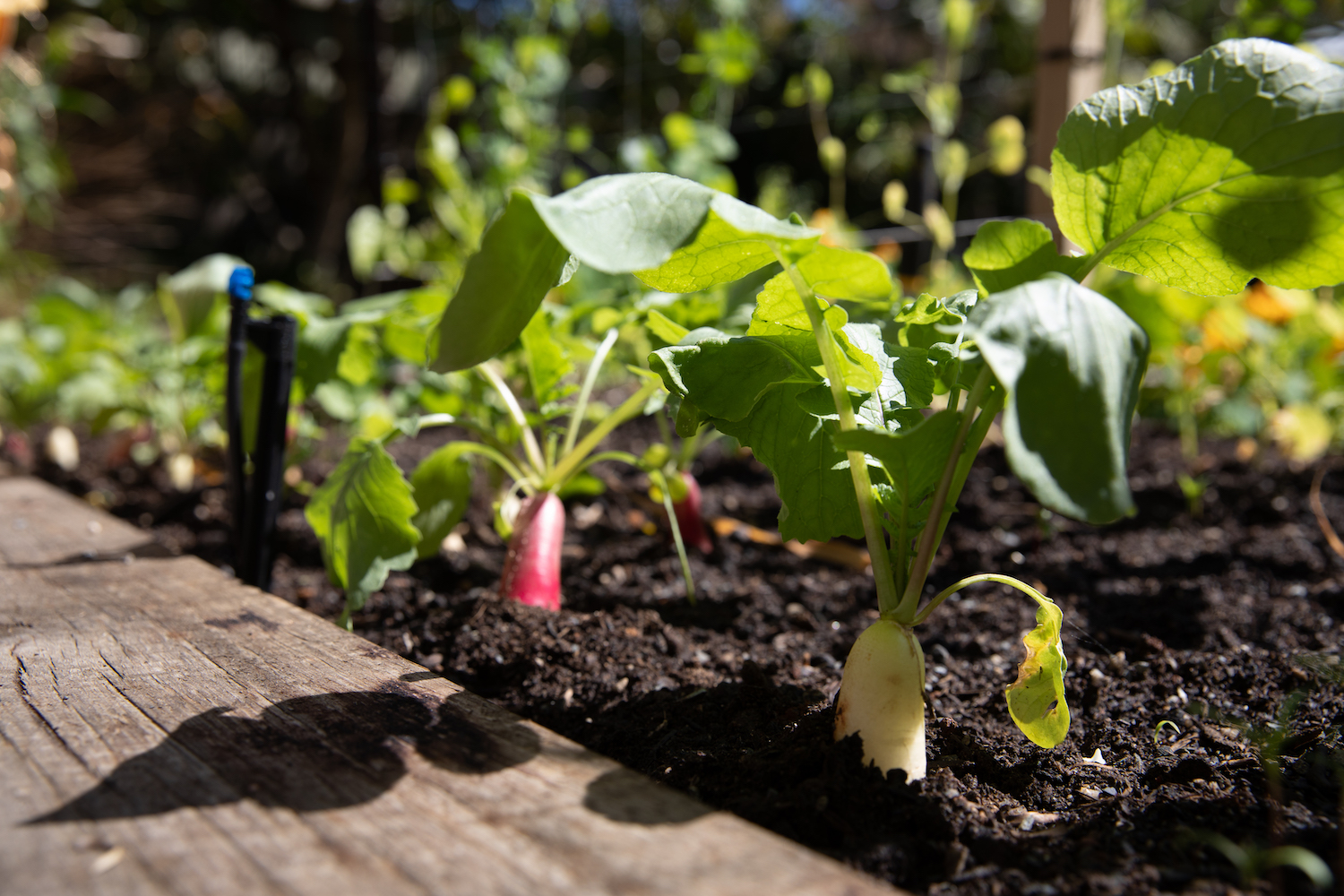5 Landscaping Choices That Help Prevent Weeds in a Yard — 'They Will Save Time and Money in the Long Run!'
Make lighter work in your garden with these strategies that will help keep your outdoor space weed-free — without a plastic weed barrier in sight

Love it or loathe it - weeding is an essential part of gardening. Even if you glean satisfaction from plucking the odd interloper from your flower bed or vegetable patch, there are ways to make the task easier. Whatever style of gardening you're drawn towards, ahead are 5 landscaping choices that will help prevent weeds in your yard.
'By working towards long-term natural and beneficial soil improvement goals of better drainage, more organic matter, increased mycorrhizal connections, and more plants to sink carbon, a modern garden can become a place for easy, pleasurable gardening without constantly battling weeds,' says Tasha Greer, author, Weed-free Gardening.
1. Improve soil quality and drainage

An abundant and low maintenance garden starts with healthy soil. A natural, nutrient-rich, well-draining foundation will enable flowers, shrubs and crops to flourish, whilst discouraging weeds. To determine what type of soil you have, and what it may need, do a soil test first, which you can do with a soil test kit like this one from Amazon.
'The aim in weed-free gardening is to develop deeper soils with better long-term water retention,' says Tasha Greer, author, Weed-Free Gardening. 'When plants can root down where temperatures and water availability are more stable, they can live healthier, lower stress lives. For that to happen, though, soil needs excellent gravitational and capillary water.
'The water that infiltrates quickly through the large pore spaces of your soil, such as between grains of sand or pebbles, is called gravitational water. That’s because gravity drains it out of your soil quite quickly.
'Having good gravitational water flow is what’s critical after an epic rainstorm or if you overwater. If you don’t have it, your soil gets boggy and plant roots rot. Then, only weeds with low oxygen needs will thrive.
'The goal with capillary water is to store as much of it as possible, as deep as possible in the soil without conditions becoming boggy and low in oxygen. To do that, soil needs to contain materials with good capillary retention. The primary sources of capillary water in soil are clay, mycorrhizae, and stable carbon.'
The Livingetc newsletters are your inside source for what’s shaping interiors now - and what’s next. Discover trend forecasts, smart style ideas, and curated shopping inspiration that brings design to life. Subscribe today and stay ahead of the curve.
'Organic matter is usually the answer to better drainage,' adds Kim Stoddart, co-author, The Climate-Change Garden. 'Adding organic matter, such as compost, to a sandy soil will improve its structure and allow more water to be retained.
'Similarly, mixing organic matter into a heavy clay soil, will also improve its structure, helping water move through the soil more quickly and reducing drainage times. If you have particularly heavy clay, the soil may benefit from grit too.'
2. Include landscape drainage

Improving the natural flow of rainwater through your yard with French drains, swales, trenches, raised beds, rain gardens or dry creek beds can help with plant proliferation–and weed prevention too.
'Soil drainage is what you manage in your flower beds, but landscape drainage also needs to be managed for garden health and weed reduction,' says Tasha Greer. 'This includes all the water that runs over your paths, down your slopes, off hard surfaces, and potentially ends up as water in your garden beds.
'For example, in dry areas, if you get seasonal rains, then to improve drainage you may want to use channels called swales to redirect it in your garden. In wet areas, you may have to redirect water away for your beds or to use raised beds.
'In both dry and wet regions, you may want to collect rainwater in barrels or impoundments so you can use it on demand rather than have it fall in a rush on your beds. Before you decide, do additional research to confirm compatibility with your soil type and applicable legal codes.'
3. Plant cover crops

A landscaping idea that Tasha Greer recommends for weed prevention in vegetable patches is planting 'cover crops'. Cover crops feed the soil in a similar way to mulch, but they are living plants so look better and many are a food source too, such as Fava beans, mustard, fenugreek and radish (we like these hybrid Fabuloso ones from Burpee).
'Cover crops can be used whenever it's necessary to address imbalances in the soil or as soil protection between planting other crops,' says Tasha. 'They are also a good way to get more carbon in your soil by using the sun. I highly recommend growing them anytime you have gaps in your planting calendar in an annual garden. It’s less work than weeding and prettier, too.'
4. Go organic
Quick fixes, such as herbicides or artificial fertilizers are just that. Unless you get the the root of the problem, those "quick fixes" will become laboriously repetitive, expensive and will eventually stop working.
Turning to organic methods of gardening will ensure your soil is well-nourished and sustaining. Healthy soil produces healthy plants, and leaves less space for opportunistic weeds.
'Soil is an amazing eco-system, and the living component (the microorganisms, worms and other animals) is essential to plant health,' says Kim Stoddart. 'Albert Howard, one of the pioneers of the organic movement, understood the link between healthy soil, healthy people and a healthy planet.
'When you use artificial fertilizer you upset the balance in the soil. A good analogy is that artificial fertilizer is like fast food for a plant. By applying it you put the soil microbes out of work and they start to disappear. The longer you continue to apply it, the lower the diversity of microbes in the soil. As a result, plants won't perform so well without an artificial boost, so it's a catch-22.'
'Obviously the application of pesticide and weed killer is also going to adversely affect some soil microorganisms and upset the balance. Combining an organic approach with techniques, such as no-dig gardening, incorporating organic matter and providing soil cover help prevent nutrient and water loss.'
5. Choose rock mulches for pathways and seating areas

Pavers and stone paths look lovely but weeds will often grow in the spaces between the slabs, where the mortar erodes or chips. These weeds are easily removed with a power wash or by pulling them up. However, rock mulches can be a great option for garden paths and seating areas, as they promote drainage around your beds and help with weed reduction.
'River rock is polished rock that looks like larger-size pea gravel. It’s heavier and compresses better than pea gravel, which makes it more weed-resistant,' says Tasha Greer. 'It’s lower maintenance overall. But its small size means it’s still best to use with edging and on mostly flat areas.' You can find River Rock at hardware stores, like Ace Hardware.
'Crusher run is mixed-size rocks that aren’t polished. It’s most commonly used for driveways. Most people don’t prefer it for gardens because it’s not as comfortable to walk on. However, from a weed-free perspective, it’s my favorite,' continues Tasha.
'It compacts better than other sizes. The larger size also seems to drain better and is easier to pull weeds out of. It can also last years without needing to be topped off.
'Rock dust is ground rock that compresses when tamped. People use it in paths. But in my experience, like compost, it needs refreshing every year to keep it weed-free. Otherwise, it quickly becomes a planting medium for certain kinds of weed.
'Most rocks are applied over weed mat and lined with edging to hold them in place.'
Jacky Parker is a freelance lifestyle journalist and writer, producing a wide range of features for magazines and digital platforms. She has written for Livingetc and its sister titles, Homes & Gardens and Country Homes & Interiors for more than 15 years, both as a freelance contributor and as Acting Digital Editor and Acting Style Content Editor, regularly reporting on the latest interiors, gardens and wellness inspiration, speaking to experts in their respective fields, and discovering the best tips.
Jacky has also written for other publications, including Sunday Times Style, The Telegraph, Architectural Digest, House Beautiful, ELLE Decoration, Red, Grand Designs and more.